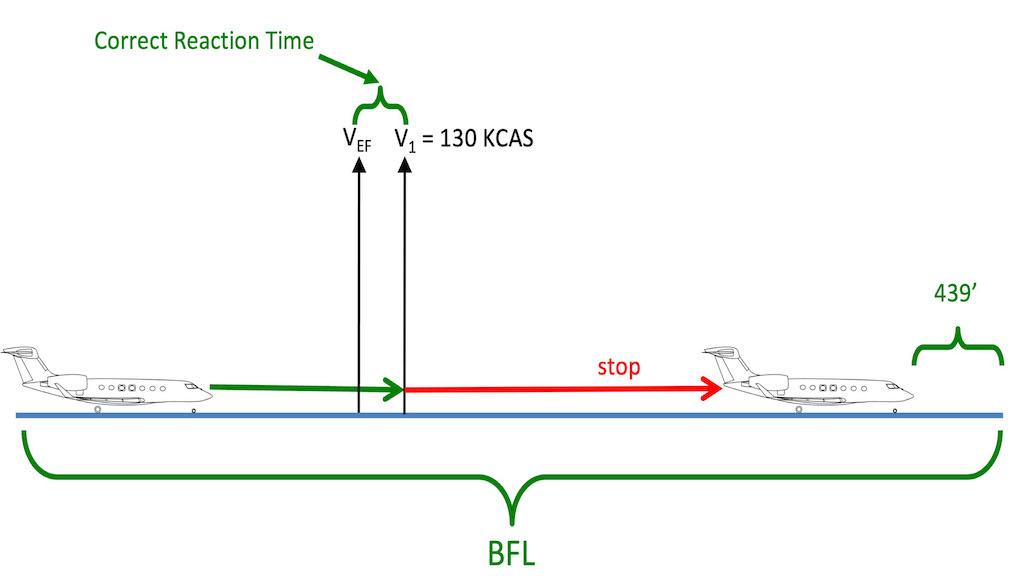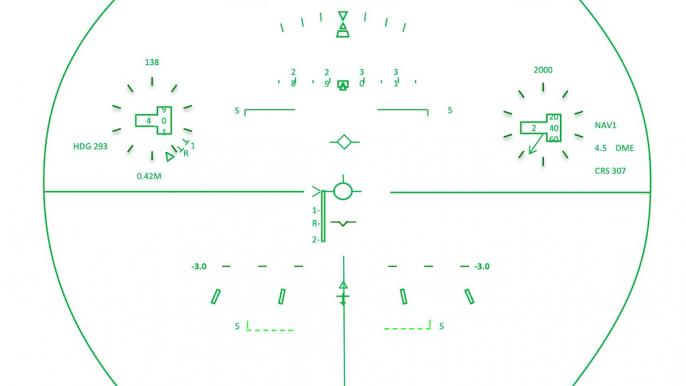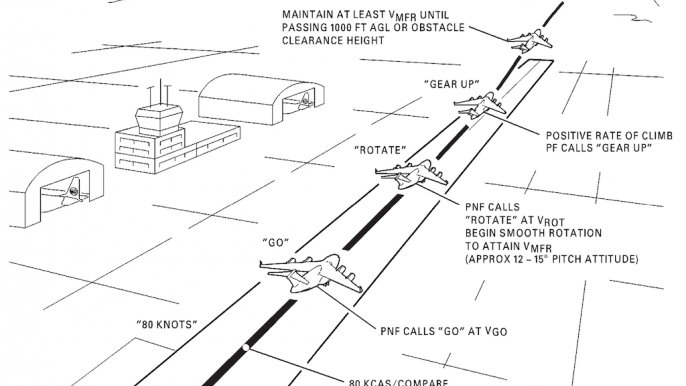
Editor's note: The first of James Albright's rethinking V1 article series appears here.
Neural reaction time has been said to be faster than the speed of light. (I must admit that I can’t see how that is possible, but the list of things I can’t see as possible is rather long.) I think the closest analogue to what we do in the cockpit is the everyday act of driving a car.
The University of Iowa conducted a test placing 192 subjects between the ages of 25 and 66 in a driving simulator. They were told it would be a 30-min. drive just to assess the look and feel of the simulator; they were not warned of a possible need for emergency action. The actual test drive took 15 min. and required a number of laps on a large two-lane “figure 8” course, driving at 45 mph on dry pavement. Each lap contained an intersection at the middle of the figure 8. On the last actual lap, with the drivers anticipating they were only halfway through the test, a vehicle appeared in their way at the intersection. The average reaction time from releasing the accelerator to maximum brake application was 2.2 sec.
You might say that we cannot compare a 30-min. drive to a 1-min. takeoff roll. Or we can say that we pilots are trained to react quickly and would certainly do better than 2.2 sec. Having suffered thousands of such decisions in hundreds of simulator hours (I stopped logging these 20 years ago), I can say that 2.2 sec. is about right for me.
I am betting your reaction time is faster than mine. Even if that is the case, you should by now agree that the words “Vee one” need to be articulated by the other pilot in time for you to hear those words, understand them, and then initiate your actions. If the pilot monitoring (PM) gets the “Vee” out at the same time you hear the “kaboom,” will your hearing and perception times allow you to continue the takeoff, as you should? It depends on when the PM says those words. When I am the PM, I try to say “Vee one” so as to finish the last syllable a few knots prior to V1. I used to assume my PMs were doing the same for me. All that changed when I started flying with head-up displays (HUDs).
Using a Head-Up Display

Before flying with a HUD, the takeoff decision process was fairly simple for me. If something worthy of an abort happened before hearing “Vee one,” I would abort. Otherwise, I continued the takeoff. During takeoff in a Gulfstream G450, I incorporated a crosscheck of the airplane’s flight path vector (FPV) while maintaining directional control of the airplane. There is a vertical bar to the left of the FPV during takeoff that shows the V-speeds to come. As you accelerate, the tape shrinks and the speeds move up. In the example diagram, the aircraft has not yet released brakes, so you can see a “1” followed by an “R” and a “2” to denote V1, rotation speed and V2.
If this seems cosmic, consider that some Boeing and Airbus aircraft have a synthetic voice that makes the aural calls for you.
As I became more and more comfortable with the HUD, I subconsciously added the speed tape in my decision making. During one particular training session, I continued the takeoff before the PM’s “Vee one” call. The instructor let me know that I was a worthless human being and that I would have to try that again. I did it again. And again.
On my third try I figured out what was happening. When the speed tape showed us at V1, I shifted to the “go mode” even without the PM’s call. He wasn’t starting to enunciate “Vee one” until we had passed V1, because that’s how he was taught. The instructor still thought I was in the worthless category because the rules he had to evaluate me on said the abort criteria was based on the call, not the speed. Of course, that started a battle of seeing who could look up the regulations fastest. I am happy to say I prevailed.
That was almost 10 years ago. In the time since, I’ve noticed most pilots I’ve flown with in the simulator don’t start to say “Vee one” until passing V1. I blame it all on the name we give it: “decision speed.” V1 is not a decision speed. It is an action speed.
Action Speed
You may not have noticed this or think you have a problem, because you grew up making the V1 call at a certain point and don’t have any evidence that you are making the call late. If you have a HUD with a V-speed tape, it will be easy enough to check. If not, try this exercise in the simulator. Ask your instructor to freeze the simulator right after the “Vee one” call during one of your takeoffs. You might be in for a surprise.
By the time you hear “Vee one,” you have no takeoff/abort decisions left to make; if the airplane is flyable, you are going. The call itself is old news. I am wondering if we should ditch it altogether. Instead of saying “Vee one” at V1, we should be saying “Go!”
In the case of N999LJ, the first officer’s “Go!” and “Go, go, go!” calls were suggestions from one pilot to the other. These calls did not have the same gravity as the V1 call. In the captain’s mind, she was making a decision at V1. The first officer’s “Go!” calls were added data that she chose to discount. I think had she been conditioned to think “go” at the “Go!” call, the outcome may have been different.
The word “Go!” should be complemented with the word “Stop!” in the case of an abort. We pilots like having a language all our own, but sometimes this goes too far. You know what “abort” or “reject” mean. But if you really want to get the other pilot’s attention and action, there is no better word than “Stop!”

At least one part of the U.S. Air Force has adopted a system similar to this. Several of its airlift aircraft, such as the C-5 Galaxy and C17, replace V1 with Vgo. These, of course, are not FAR Part 25 certified aircraft and are not constrained by our civilian "we've always done it this way" mindset.
Can we adopt this idea when the entire industry has decades of “Vee one” at V1 experience? I don’t know. But at the very least, we should be saying it to ourselves. If you have something like a V-speed tape, you should be thinking the word “Go!” when you get close to V1. If you don’t have that kind of tech, you should discuss the issue with your PM. My preference is to say “Go!” when the time comes, but you should at the very least be thinking it: “Go!”






Comments